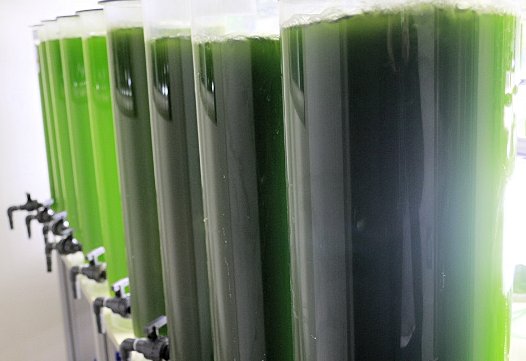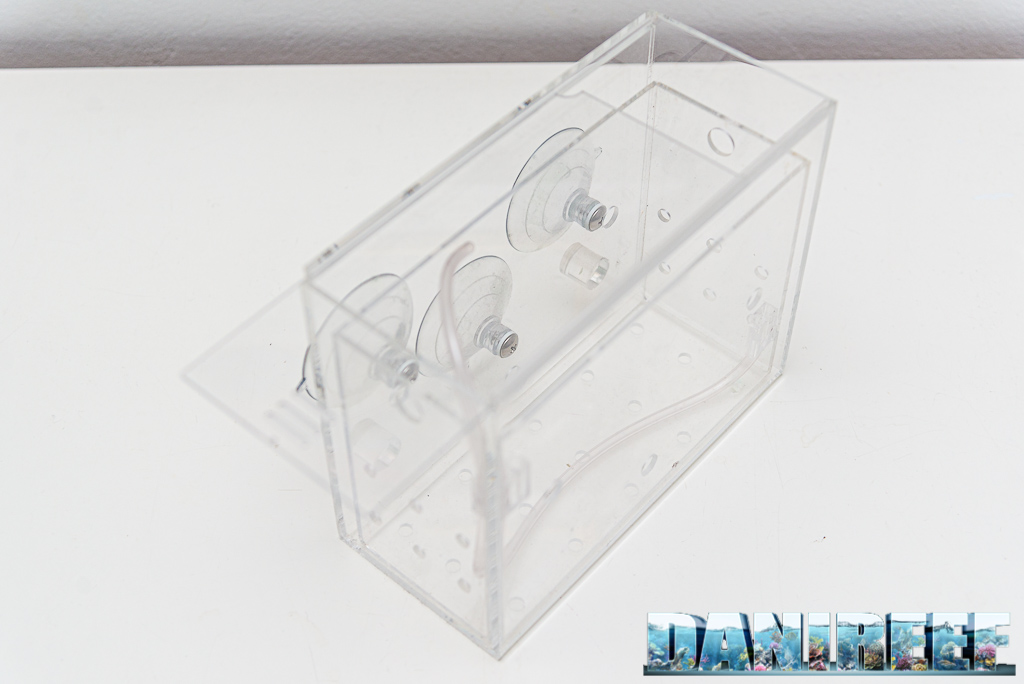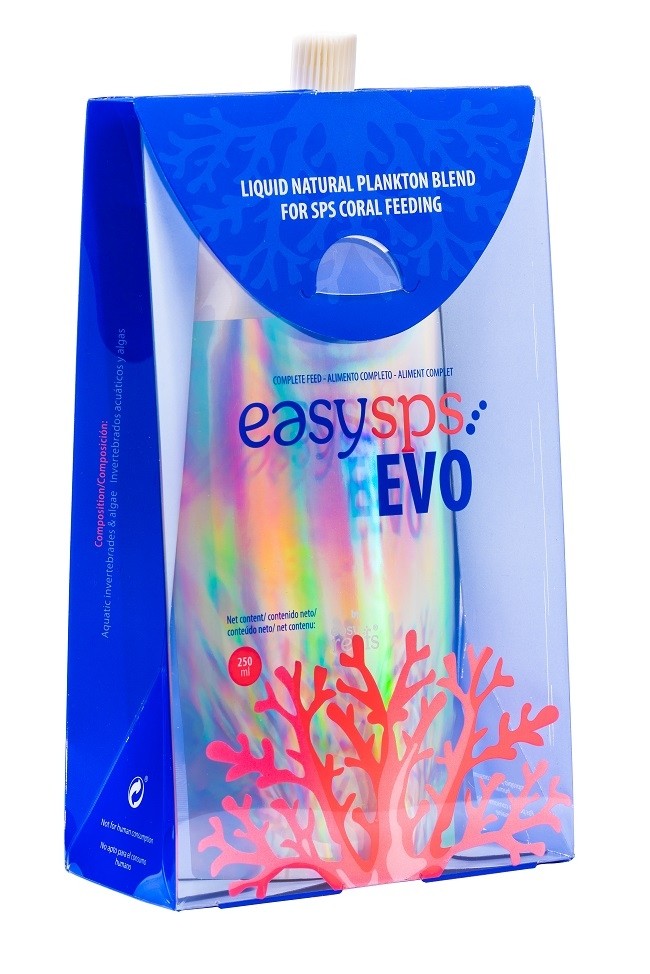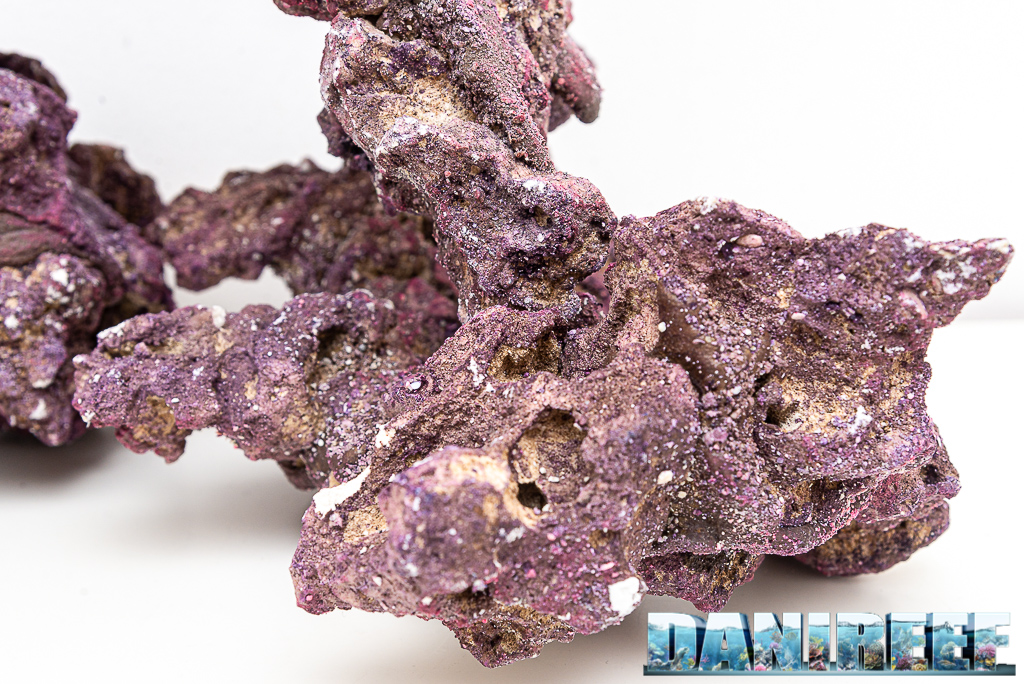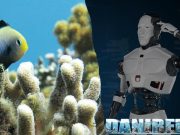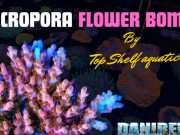
We already covered in previous articles the benefits of phytoplankton and zooplankton supplement in a reef aquarium, and how to build them up in our system.
This article is also available in: ![]() italiano
italiano
Today I will illustrate some phytoplankton features. They can be useful to know in order to evaluate which species to culture and feed to our tank regularly. First of all you need to know the various components that may be present and familiarize yourself with their relative concentrations. With the increase of information on human nutrition we all know very well the three fundamental compounds: fats, fibers and proteins, so I will not elaborate further on them.
Aminoacids are essential for us as well as for many organisms: they can be synthesized or taken through food. Not all aminoacids can be synthesized and those that the organism cannot produce by itself are called essential aminoacids, without which nutritional deficiencies can be developed and in some cases become pathologies.
Another category of essential nutrients is that of long chain fatty acids, saturated or unsaturated fats that have beneficial effects on the body. The omega 3 and 6 fatty acids have been shown in recent years to have effects on cholesterol levels and on the circulatory system. Eating fish is recommended for the intake of these fatty acids, but if we considered the whole nutritional chain we would see how these levels of good fats in fishes originate from the phytoplankton that can be more or less rich of them.
Carotenoids and the various photo-synthesizing pigments or accessories are necessary for animals as they are unable to synthesise them on their own.
The concentrations I was referring to earlier are very simple and practical. If our phytoplankton culture has few cells per unit volume (I will use ml for easiness) you will have to administer many more milliliters to your tank to achieve the same effect of one with higher concentration. A practical example: if we dose 50 ml with a concentration of 5 million plant cells per ml it would be the same as dosing only 10 ml of one with 25 million per ml! Cell concentration is not easily measurable, but a nice solid green color that lets in little light is very close to this value.
While assessing the concentration of plant cells has a practical meaning and result, it is not possible to develop a simple system that guarantees that the nutrient enrichment has disappeared from the culture. Although the term “mature” usually refers to this second possibility, it makes more sense to use this term referring only to the high cell concentration.
Since the culture of marine micro-algae and other organisms is now part of biotechnologies used in increasingly large fields, you can find on the market many different species with various characteristics and a technical features. Given the large diversity of algae, each species will have different characteristics but also different nutritional needs.
Algae Species
Among the many genera that can be found on the market and also available in the aquarium industry, the most widespread is definitely Nannochloropsis salina as it has been present in a commercial product since the late 90s. Of the genus Nannochloropsis, there are two other species: N. oculatae and N. gaditana.
This genus is the best to start growing phytoplankton. The characteristics of N. salina are not very relevant, it doesn’t have special growth requirements and can also tolerate salinity errors and a fair amount of evaporation.
N. gaditana is similar to N. salina, it is used and cultured in great quantities for human and animal nutrition, as well as N. oculata.
Of the same genus but with a better nutritional profile is N. oculata. It is used in marine cultures and has the same benefits of N. salina but a better composition.
Another genus easily found is Chlorella, to which belong many freshwater algae species. C. vulgaris is the most widely produced for human consumption while other species are used for the aquarium industry which are usually only identified by the genus Chlorella. This alga is also used in some industrial feed as a Spirulina (Arthrospira) substitute.

The genus Tetraselmis is widely used in aquacultures. It is quite easy to culture and complementary to Nannochloropsis oculata. Of this genus, the most used species is T. suecica.
The last genus is Isochrysis. I. galbana is the most challenging one to grow, but it’s also the most useful and used in both aquaculture and mariculture. Every time I tried culturing this alga I managed to maintained them alive for maximum 6-8 months, then I lost the cultures due to contaminations or other problems. This species has an optimal nutritional profile as it contains both polyunsaturated fatty acids DHA and EPA in a single cell. This feature makes it ideal for growing any larvae species of fish and invertebrates such as molluscs and shrimps.
Algae Characteristics Compared
| N. oculata | Chlorella spp. | T. suecica | Isochrysis spp. | |
| Cell size: | 2-6 µm | 4 x 4 µm | 8-16 µm | 4×6 µm |
| Type: | Green | Green | Green | Brown |
| Calories: | 48,4 Kcal/100g s.s. | 326 Kcal/100g s.s. | 48,2 Kcal/100g s.s. | |
| Vitamin C: | 0,85% | 0,85% | 0,25% | 0,29 pg/cell |
| Chlorophyll A: | 0,89% | 0,89% | 1,42% | 6,8 pg/cell |
| Proteins: | 52,11% | 57,5% | 54,66% | 21,93-25,47 % |
| Carbohydrates: | 12,32% | 17,3% | 18,31% | 9,38-11,02 % |
| Fats: | 27,64% | 12,4% | 14,27% | 55,21-58,39% |
| EPA | 25% | – | 9,3% | 0,08 % |
| ARA | 5,26% | – | 0,4% | – |
| DHA | 0-0,1% | – | – | 0,79 % |
There are many more species of algae to be cultured with different features from the ones we illustrated so far. Species of diatoms algae such as Pavlova spp. and Chaetoceros spp., to briefly name some, offer more challenges in the settings of home cultures.
Culture
Growing algae at home should not represent such a commitment and does not require very specific equipment. A couple of sterilizable containers, a light spot and a small air pump with accessories it’s all that’s needed to start a small culture for our home aquarium.
Our attention should be set upon the starter kit we buy at the beginning, and on the nutrient enrichment we choose. Each species of algae has different needs in terms of nutrition and having the right nutrients can make the difference between success and failure.
A lack of quality of the culture or its entire death can result from an incorrect management, but I never experienced the growth of potentially dangerous organisms from these cultures.
A good quality starter kit does not mean there will be no problems whatsoever, especially if the growing conditions are not maintained correctly.
The methods I usually recommend is that of “doubling the volume“. This method aids us with possible salinity and temperature errors, and allows us to “collect” an ideal quantity for our tank or zooplankton culture.
The volume needed for the culture depends on the aquarium volume. Considering a 100 l tank we could dose 500 ml weekly with some surplus for starting a small zooplankton culture. If you use the above method, doubling the volume, with 1 l production you should have enough for you aquarium.
Phytoplankton administration, if grown properly, does not have any contraindication. It is impossible, though, to recommend exact quantity as the actual concentration will never be known. A DIY product will have two main characteristics: it will be alive and lively.
Alive: unaltered look and integrity of the cell, and lively: able to multiply as it would in the sea.
Another important factor is that you should be able to grow it with roughly the same salinity of your aquarium. This will make sure that the phytoplankton will stay alive and lively when you dose it in your tank.
Visible Effects of Phytoplankton in Aquarium
Visible effects to notice on the administration of phytoplankton: after a few days there will be a greater transparency of the water as the protein skimmer will start working using every single cell to aggregate the dissolved compounds. In the longer term you will notice an increase in sponges and filtering organisms that will help eliminating the dissolved substances in the tank.
Small possible problems can arise even when using good quality and safe starter kits. For example, water form partial water changes of the tank should not be used as it is very rich in bacteria. Bacteria can take up part of the nutrient enrichment and multiply, outcompeting the alga which will not grow properly. In your final culture you could also find unwanted algae species which are present in your aquarium, or you could accidentally grow ciliates (which we can still use as zooplankton) that may eat up the whole alga in just one day.
To preserve the culture during the week in which you will administer it to the tank, I advise that you just keep it in the same condition in which it was raised. Storing the culture in a refrigerator is not advisable. In my experience this procedure is not recommended because if the concentration of algal cells is high, they could aggregate and settle, and then would start to rot. So, if picking up the container you find it clearer than it was originally when you stored it, or if you have to shake it to put the phytoplankton back in suspension, I advice you pour it in the sink rather than in your tank!
All information given in this article are absolutely not to be used for products intended for human consumption.
[Article written by Davide Mascazzini]
Related articles:
- The global seas nutrient cycle: a better understanding of its application in aquariums
- Plankton – zooplankton and phytoplankton – getting to know them
- Phytoplankton – algae species, cultures and results




